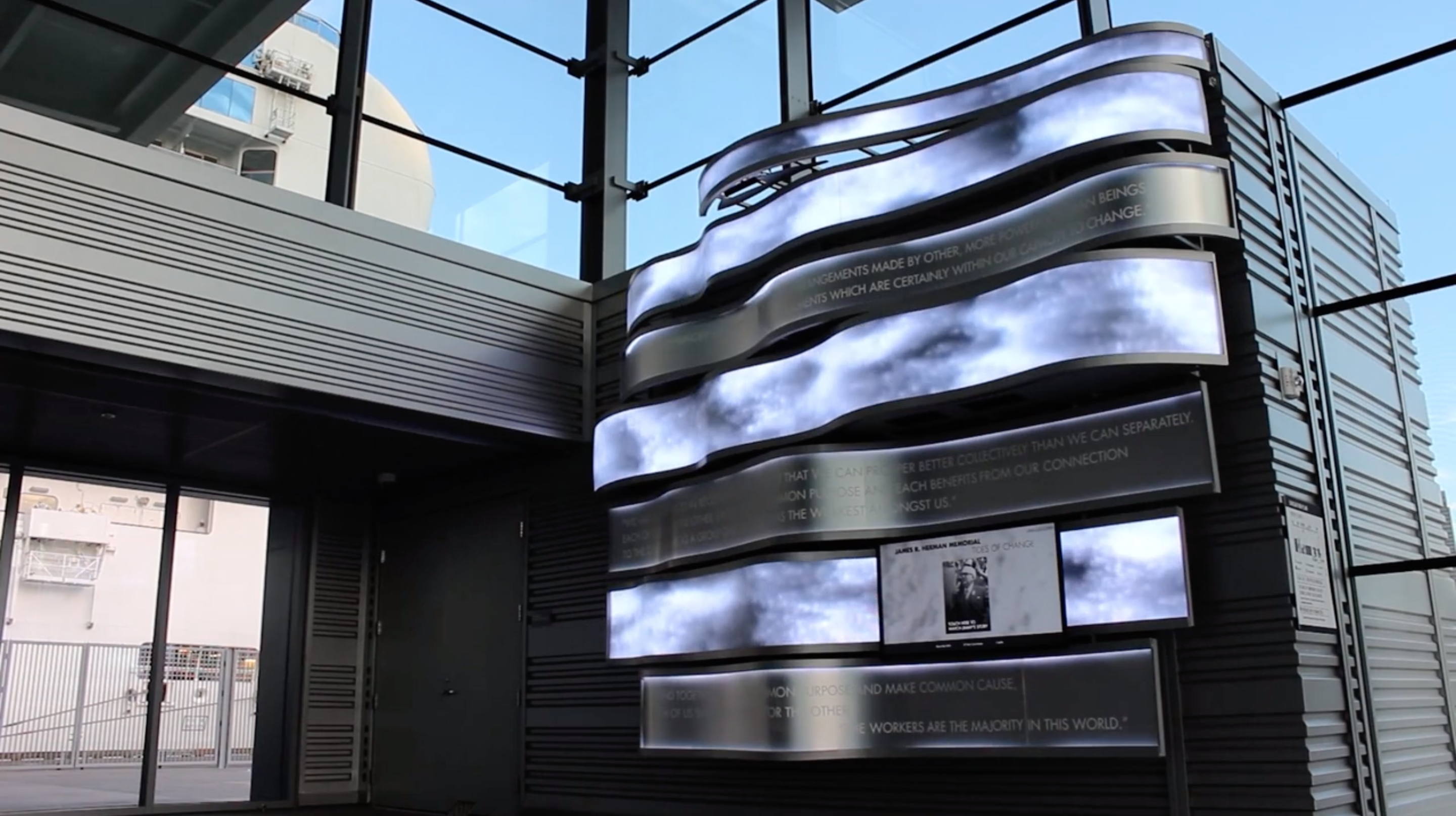




TIDES OF CHANGE
Honoring the memory of a celebrated union leader with an interactive memorial, permanently installed at the James R. Herman Pier 27 Cruise Terminal in San Francisco
Credits
Commissioned by
The Port of San Francisco with support from the James R. Herman Memorial Committee
Concept + Design byFloating Point Collective: Genevieve Hoffman, Jack Kalish and Gabriella Levine
Fabrication + Installation Sheet Metal Alchemist
With support from Autodesk’s Pier 9 Workshop
Role
concept, design, archival research and content development, technical project management, software prototyping, touchscreen app development
Commissioned by
The Port of San Francisco with support from the James R. Herman Memorial Committee
Concept + Design byFloating Point Collective: Genevieve Hoffman, Jack Kalish and Gabriella Levine
Fabrication + Installation Sheet Metal Alchemist
With support from Autodesk’s Pier 9 Workshop
Role
concept, design, archival research and content development, technical project management, software prototyping, touchscreen app development
As a part of Floating Point Collective, I was commissioned to create a permanent public art sculpture to memorialize the life and legacy of James R. Herman. Tides of Change is an interactive light sculpture installed at the Pier 27 Cruise Terminal on the Embarcadero in San Francisco, CA. The memorial was completed in early 2015.
The installation consists of a steel frame, and alternating panels of aluminum and flexible LEDs. Drawing on Herman's life as a sailor, longshoreman, and social activist, we wanted to reference the ocean as both a calm but powerful force. The larger sculpture animates like flowing water, which flows around a viewer's outline if they stand still in front of the installation. The touchscreen provides biographical content and information about the social justice causes that Herman championed. If viewers select to explore certain issues, quotes by Herman animate across the larger sculpture.
The installation consists of a steel frame, and alternating panels of aluminum and flexible LEDs. Drawing on Herman's life as a sailor, longshoreman, and social activist, we wanted to reference the ocean as both a calm but powerful force. The larger sculpture animates like flowing water, which flows around a viewer's outline if they stand still in front of the installation. The touchscreen provides biographical content and information about the social justice causes that Herman championed. If viewers select to explore certain issues, quotes by Herman animate across the larger sculpture.
Video documentation of the interactive lighting elements responding to user interaction, process of the design and production, as well as context for the man memorialized.
A beloved labor leader and activist
The Port of San Francisco decided to name the new cruise terminal they were building at Pier 27 after one of San Francisco's most loved and cherished union leaders, James R. Herman. Herman was a union leader and labor activist, who was president of the International Longshore and Warehouse Union (ILWU) from 1977 - 1991. During his tenure, he was able to negotiate substantial wage increases without resorting to a single strike. He also championed the rights of workers and the disadvantaged around the world, leading boycotts of coffee from El Salvador during the military junta and imports from South Africa during the Apartheid Era. Herman was also a political force of nature in San Francisco during the 70s and 80s.
Top: Herman protesting at an anti-apartheid rally and against Salvadoran coffee during the military junta
Below: Herman with Cesar Chavez, Dianne Feinstein and Desmond Tutu
Below: Herman with Cesar Chavez, Dianne Feinstein and Desmond Tutu



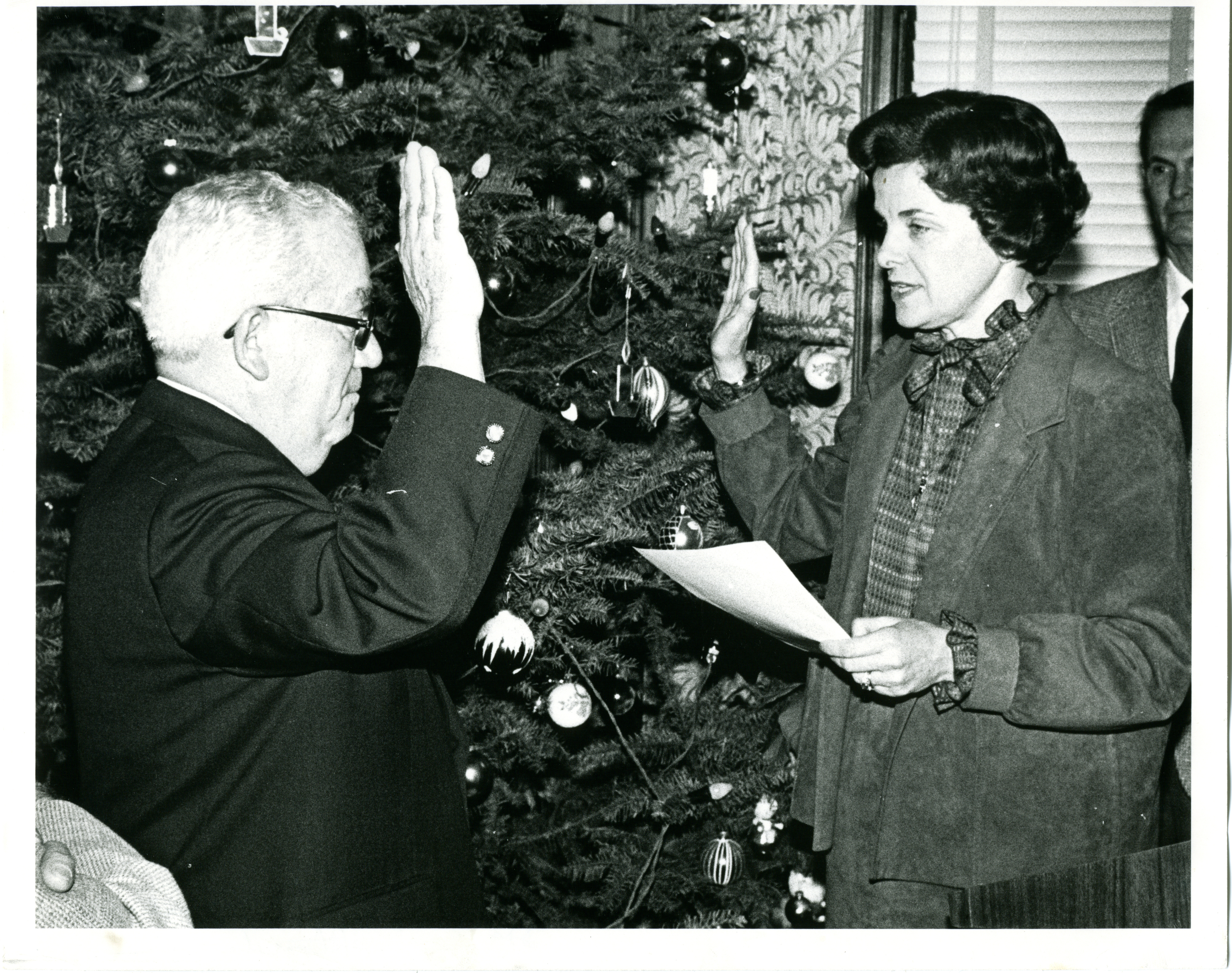

Working as the collective Floating Point, we were invited by Autodesk's Pier 9 Workshop artist residency to submit a proposal to create an installation commemorating James R. Herman's life for permanent installation in the new cruise ship terminal.
Commemorating the past with new media
One of the memorial committee's requests was that a touchscreen might accompany the memorial so that new generations of San Franciscans and visitors to the city might come to know the life and legacy of Jimmy Herman. As a new media art collective, we realized the possibilities of having a touchscreen integrate with a larger sculpture, to amplify users' gestures and selections.
Formally, we were inspired by Jimmy's life as a sailor and longshoreman, and decided to create an interactive light sculpture in the form of ocean waves. Some of these waves would animate with LED pixel arrays. Others, would be metal and inscribed with some of Herman's most celebrated quotes, referencing his political views and social activism.
Formally, we were inspired by Jimmy's life as a sailor and longshoreman, and decided to create an interactive light sculpture in the form of ocean waves. Some of these waves would animate with LED pixel arrays. Others, would be metal and inscribed with some of Herman's most celebrated quotes, referencing his political views and social activism.

Early concept sketches for the memorial by Jack Kalish
For the proposal we modeled the sculpture in Cinema4D to create a rendering of how lighting elements and interactivity would activate the installation.
Early renderings depicting the installation by Jack Kalish

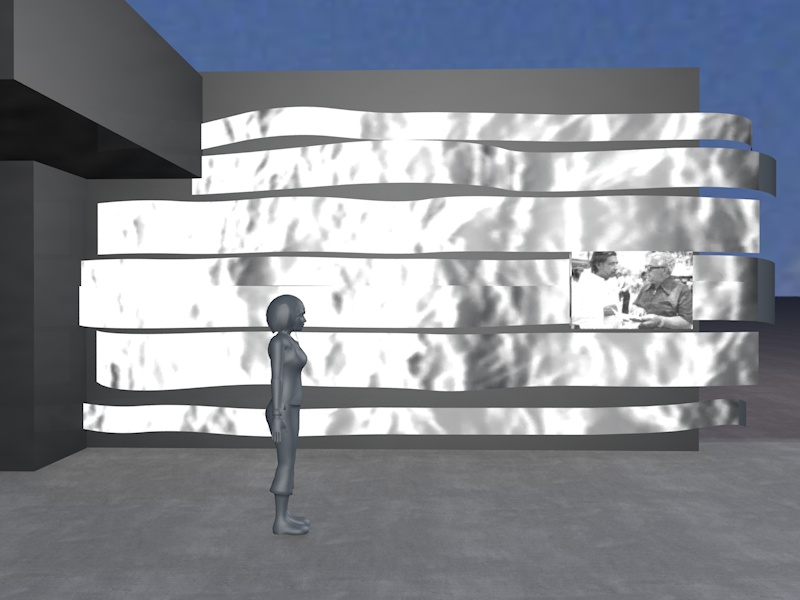
We were delighted to receive the commission and spent the next 6 months working out of Autodesk's Pier 9 workshop to design, prototype and fabricate the sculpture we'd proposed.
Getting the materials working together
One of our first tasks was to determine the type of metal finish we'd use for the sculpture. To avoid rust, we knew we wanted to powder coat any metal we might use for the structure with a metallic finish.

Powder coating samples mimicking a metallic finish
Originally in our proposal, we’d thought we might use projection to activate a metal base sculpture. However, upon visiting the site, we saw the sheer number of windows and daylight that would make anything projected impossible to see during the day. We quickly shifted gears and began to look at LEDs as our means to activate the sculpture.
We researched a number of options for an LED display that would allow us to activate the individual waves so that they could both be surfaces for animation, and allow for text to be legible since we wanted to activate various quotes from Herman from the touchscreen. We found a flexible panel that would magnetically attach to a metal frame, in order to make our lighting surface curved like a wave.
We researched a number of options for an LED display that would allow us to activate the individual waves so that they could both be surfaces for animation, and allow for text to be legible since we wanted to activate various quotes from Herman from the touchscreen. We found a flexible panel that would magnetically attach to a metal frame, in order to make our lighting surface curved like a wave.
A panel from the flexible LEDs we used for the lighting elements
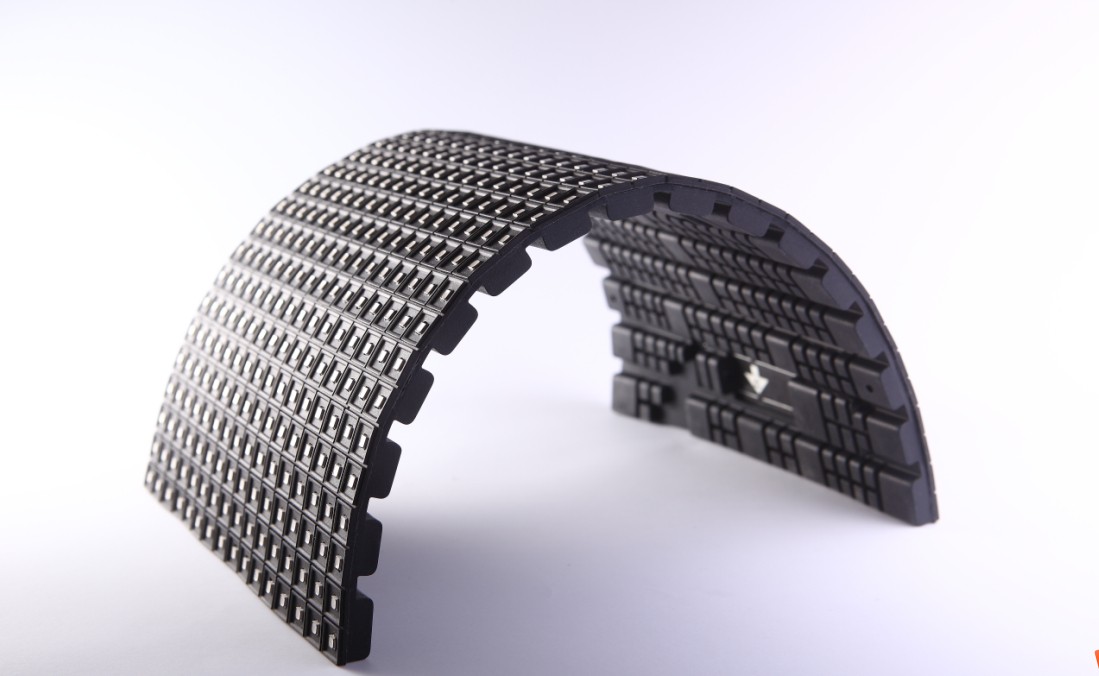
We also decided that diffusing the LEDs would give us the best look and feel to match the type of animation we were after — mimicking waves crashing and letters dissolving.

Tests of various diffusion materials to cover the LED array. We ended up using a 10mm resolution, which still made text legible from a distance
For both budgetary and aesthetic reasons, we chose not to cover each wave with LED tiles. We knew that there would be times that the piece would be turned off, and we still wanted Herman's words to have a presence in the space when that would be the case. To visually connect the waves that would not be covered in LED panels, we decided to run strips of LEDs along their tops and bottoms, to amplify the effects of light traveling across them
Testing LED strips against different types of anodized aluminum as the material option for the metal waves
We ended up lettering anodized aluminum panels with his quotes, choosing a lighter shade to encourage the viewer to walk around the space as they took in the words.
Developing the design of the experience
Alongside material research and testing, we actively developed the design for the concept we’d been chosen to create.
We modified our initial design to accomodate ADA compliance laws, so that people with visual or physical impairments would also be able to engage with the memorial. We sourced directional speakers so that a video commemorating the life of Jimmy Herman would be audible to people who might not be able to see the touchscreen. We also placed the touchscreen and waves at heights that could accomodate people in wheelchairs.
We modified our initial design to accomodate ADA compliance laws, so that people with visual or physical impairments would also be able to engage with the memorial. We sourced directional speakers so that a video commemorating the life of Jimmy Herman would be audible to people who might not be able to see the touchscreen. We also placed the touchscreen and waves at heights that could accomodate people in wheelchairs.
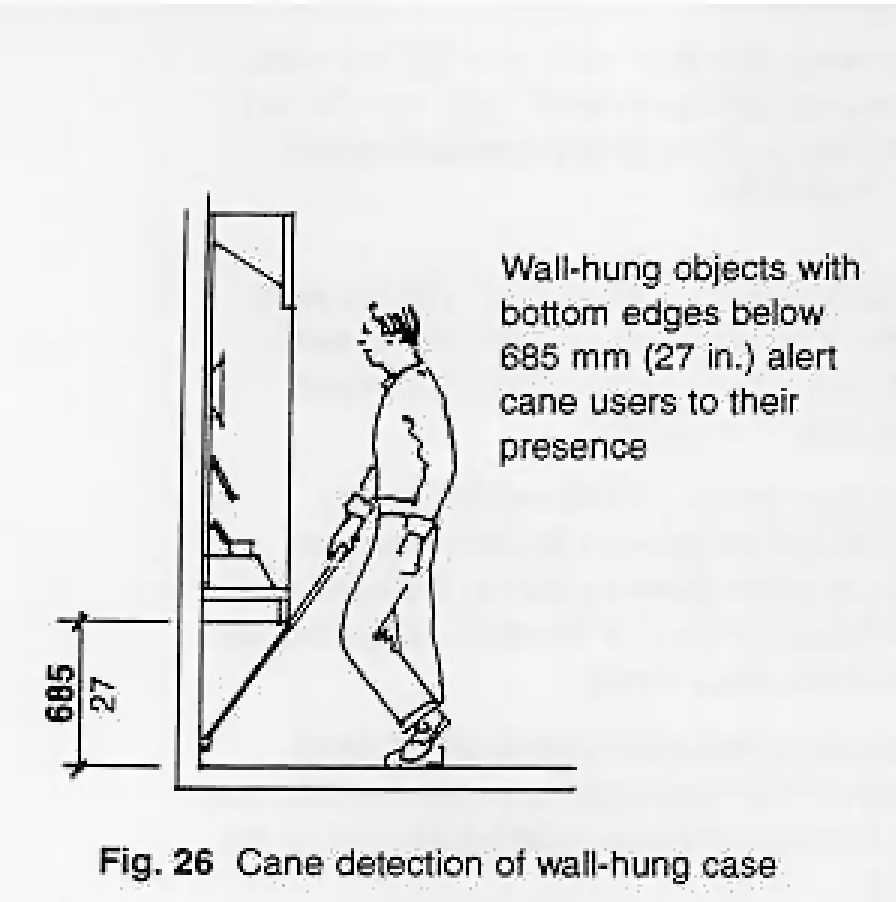
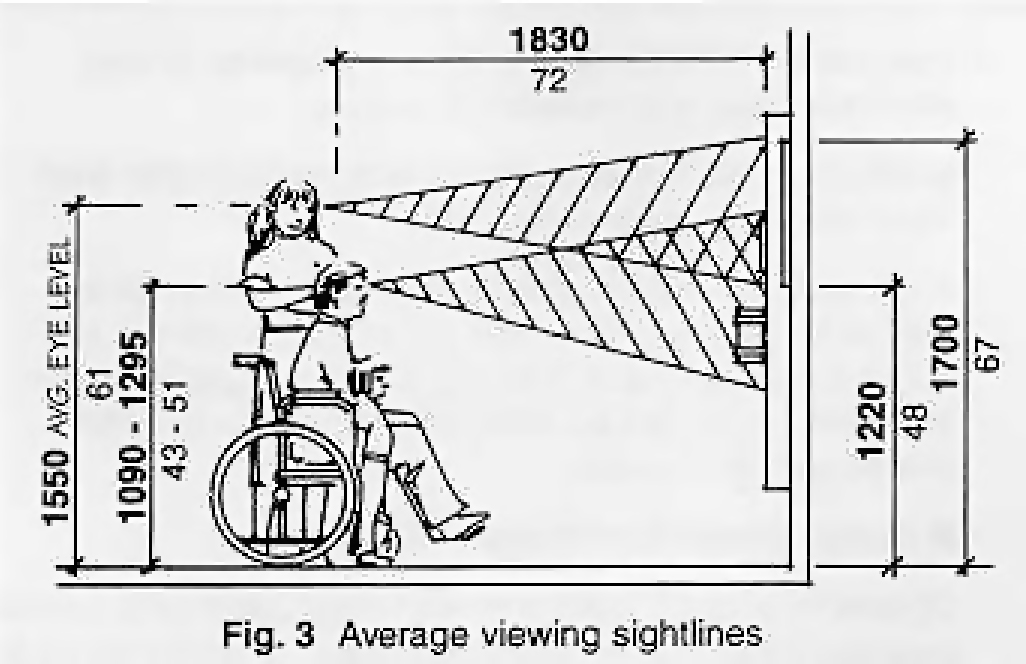
ADA guidelines to ensure that exhibits are accessible to people with disabilities
We submitted updated renderings and design documents to the Port of San Francisco after 3 months of developing our initial concept. These documents laid out the technology we’d incorporate, the wiring we’d need the building contractors to install, as well as our plans to store the computers running the installation.
Renderings that depict the installation after developing the design

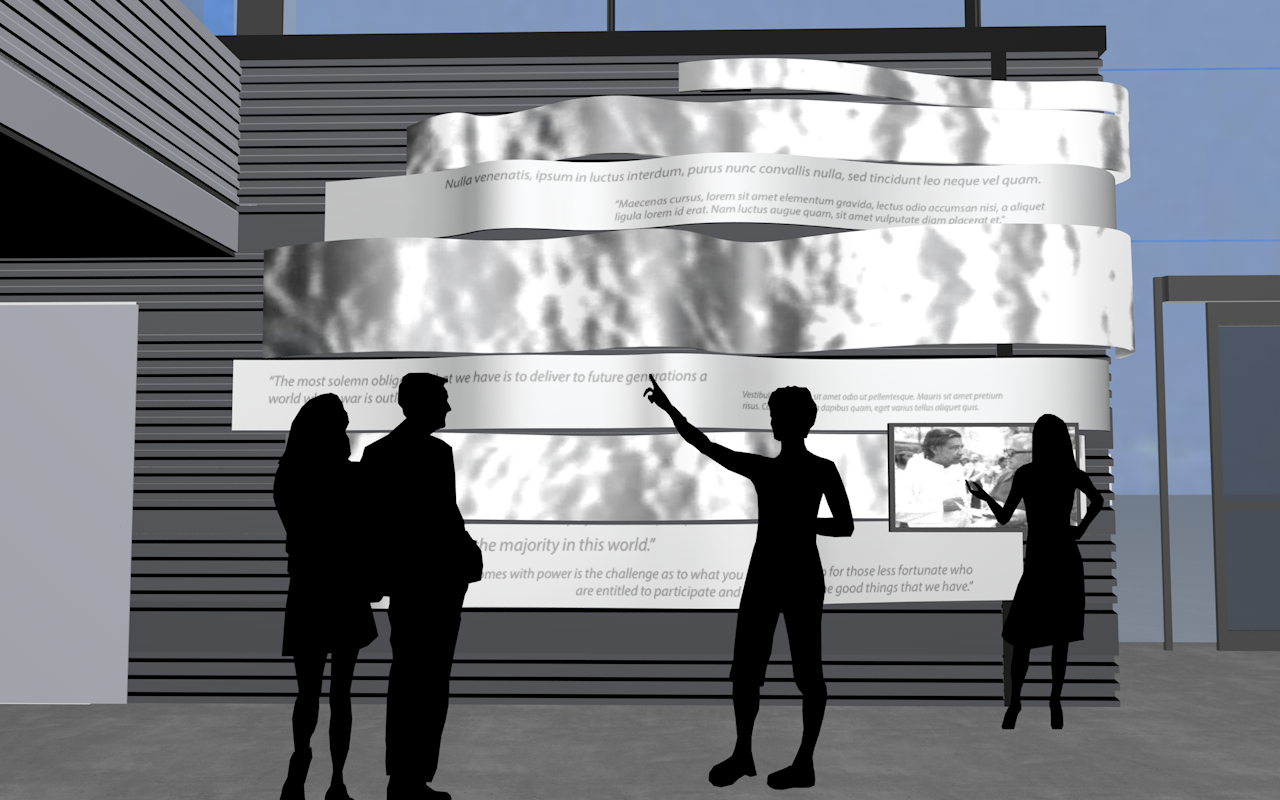
Of seven total waves, four were covered in LED panels and three were made of anodized aluminum with quotes by Herman visible even with the technological elements turned off
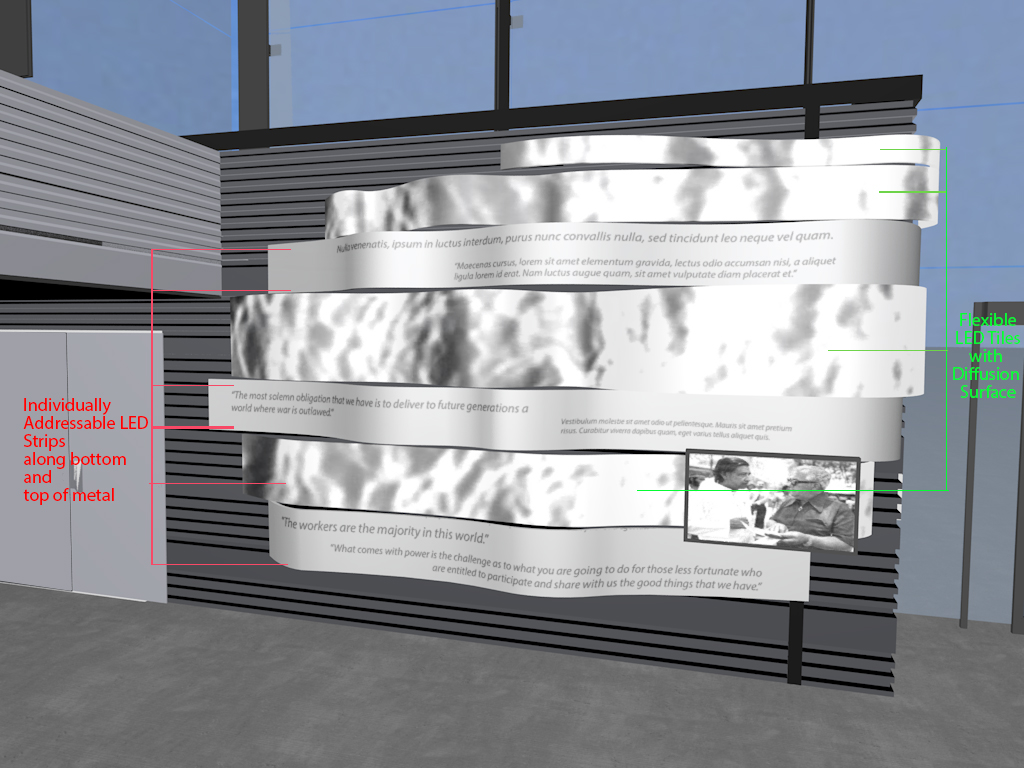
A motion study showing patterns of light animating across the waves as well as quotes by Jimmy Herman coming into focus
Renderings demonstrating the field of view the Kinect depth camera would have of people in front of the memorial. We used the Kinect to program interactivity where a viewer’s outline would interrupt the animations of crashing waves

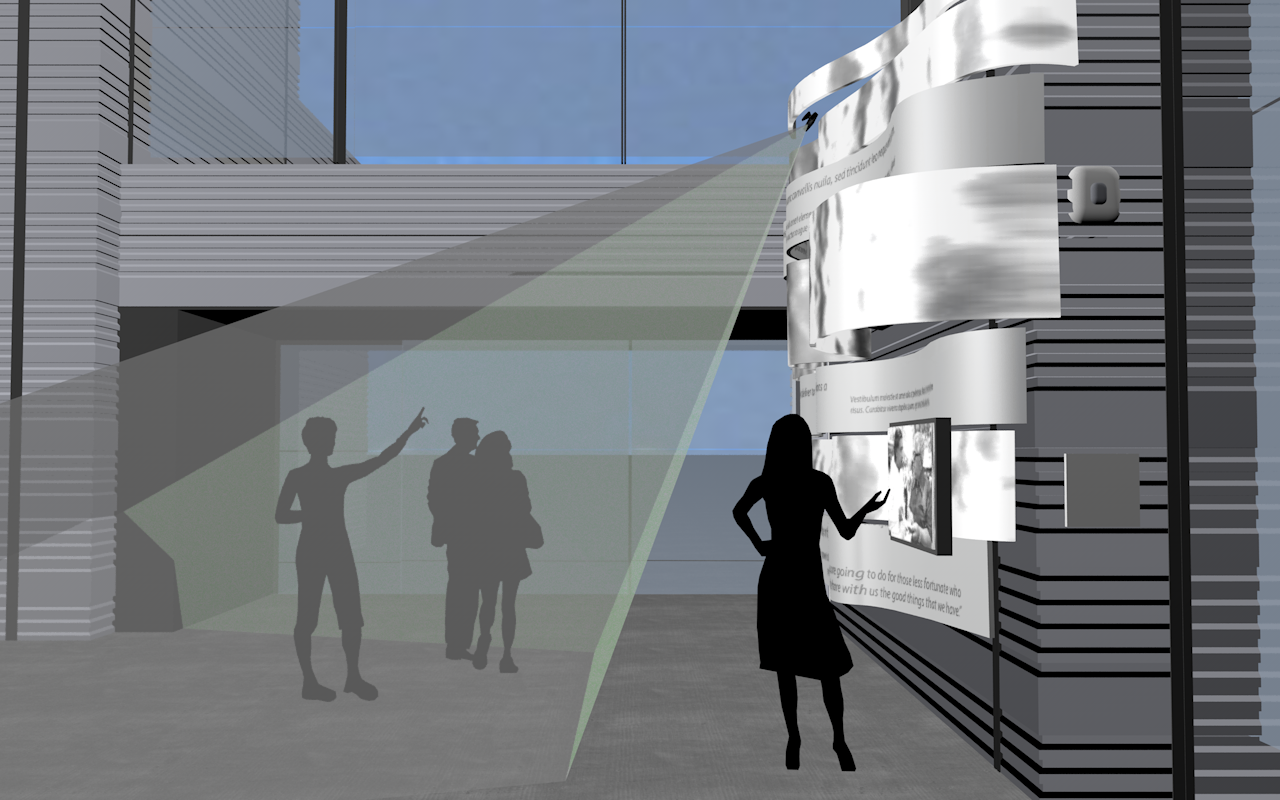
We designed the shape of the waves to hide directional speakers above the touchscreen so that viewers could listen to a video about Jimmy’s life if they were standing directly beneath
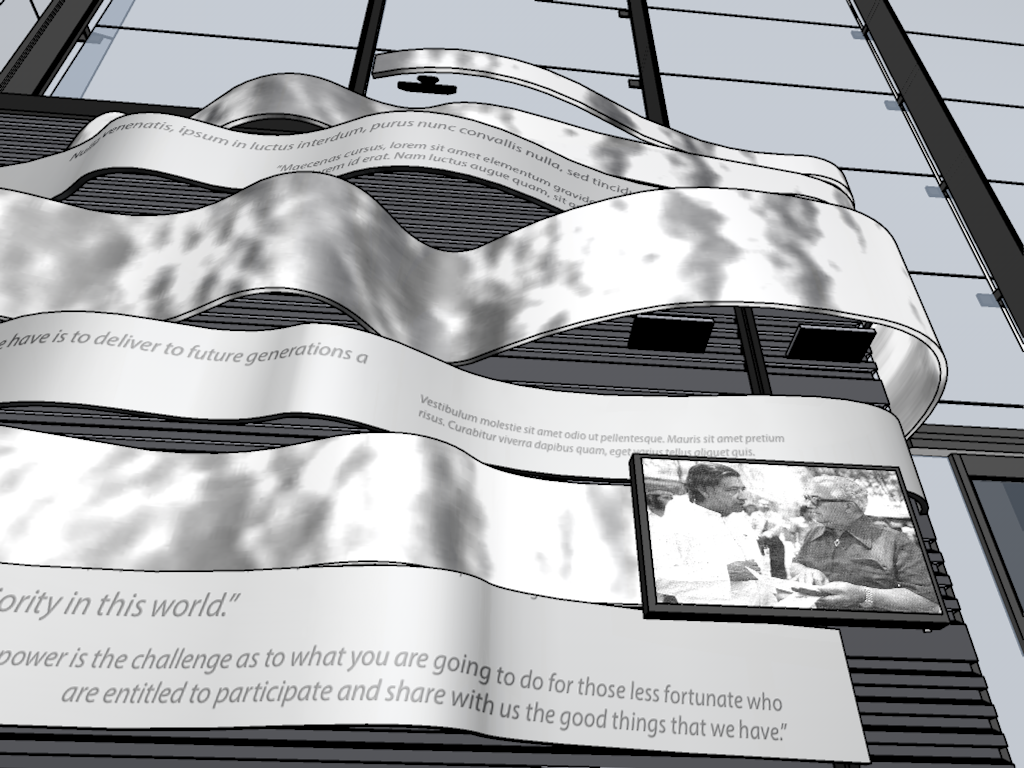
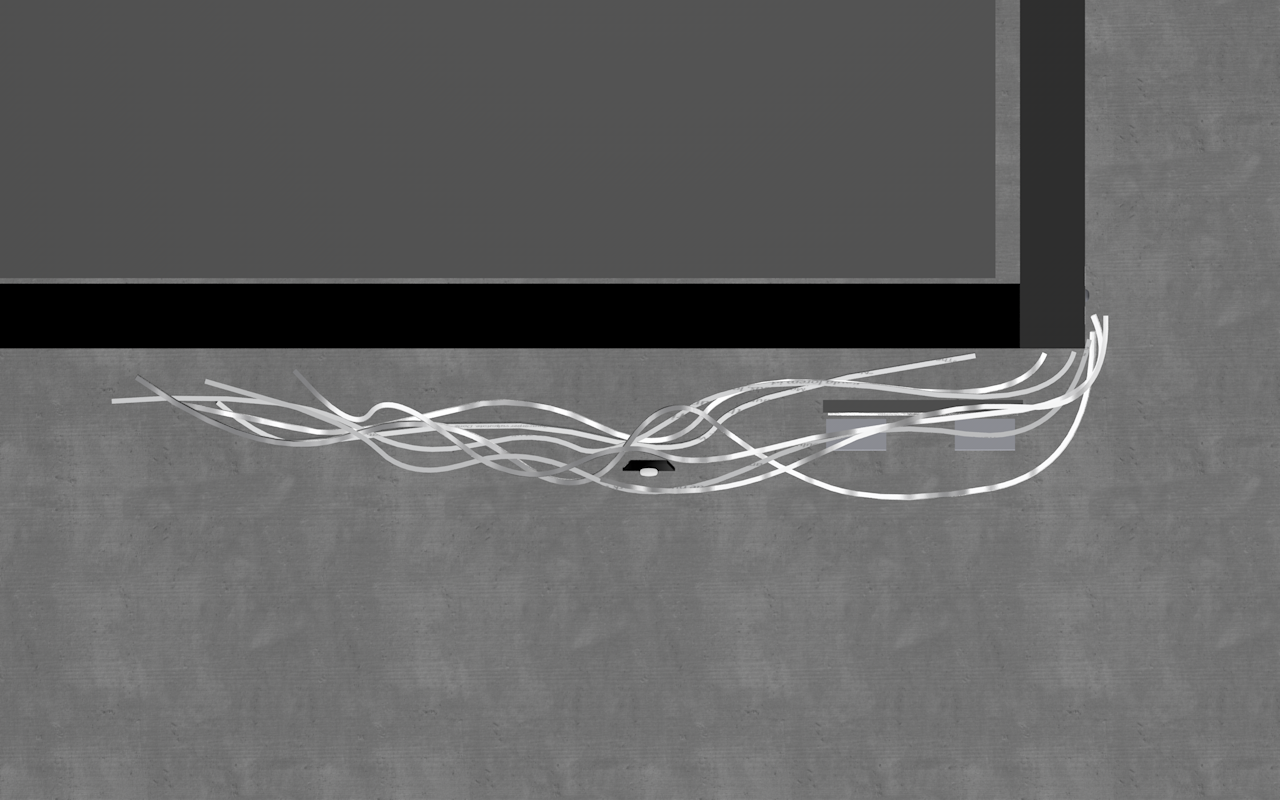
Technical illustrations of the final design dimensions and placement of technology components
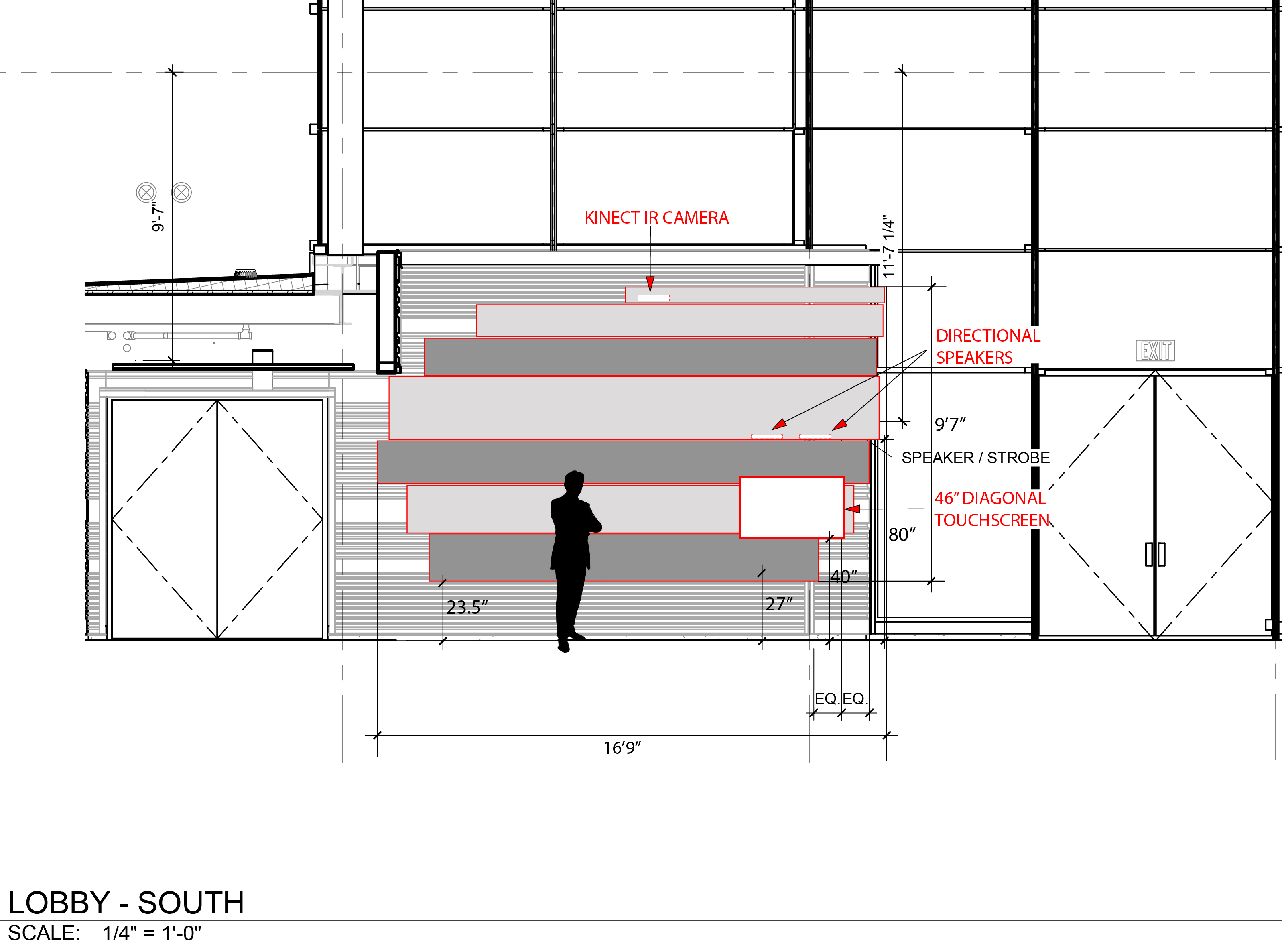
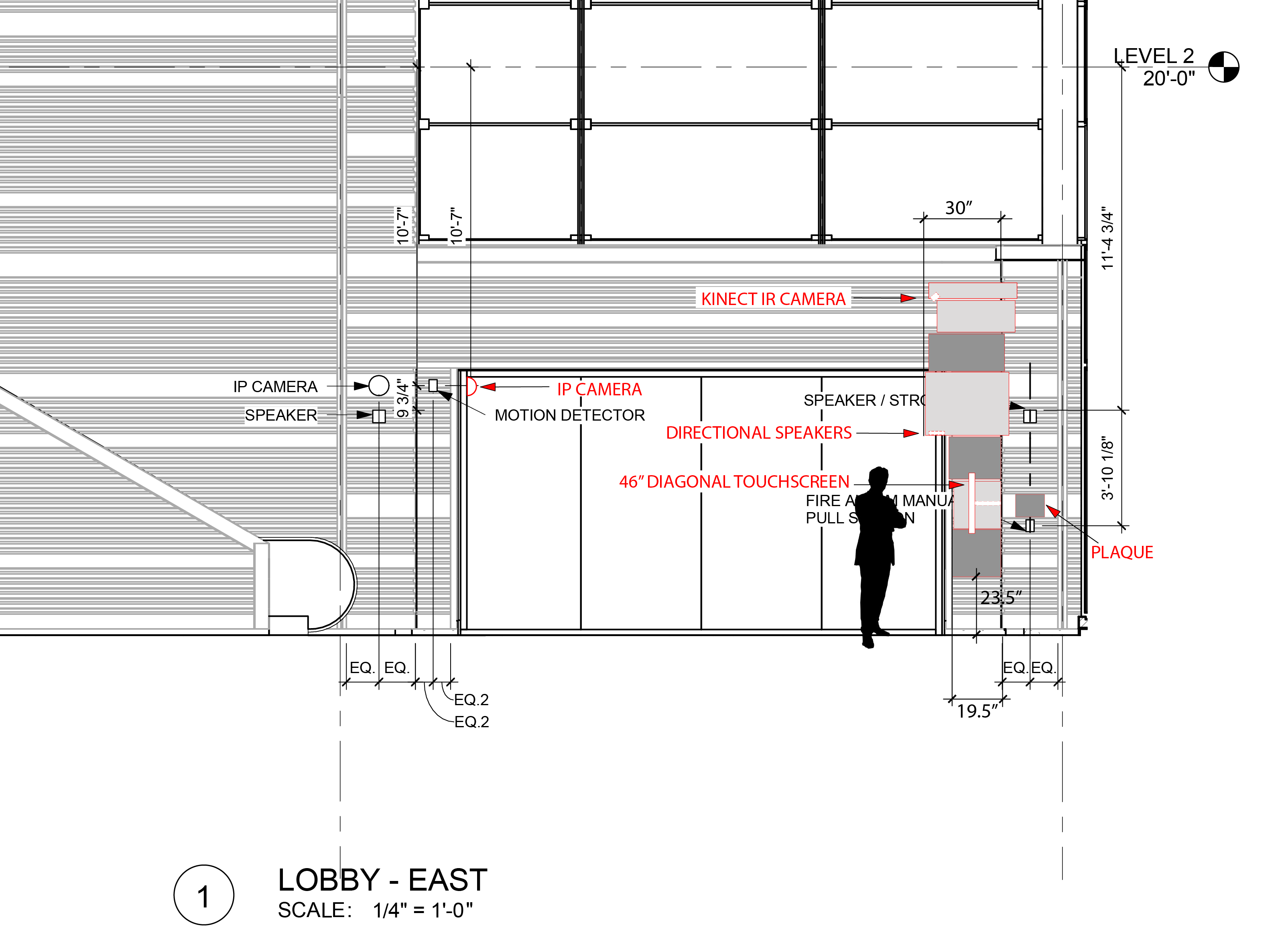
As a collective specializing in art and technology, we felt confident researching, designing and sourcing technical components. However, engineers and metal fabricators we were not. To design, fabricate and install the metal frame, we worked with Sheet Metal Alchemist, a design build firm that also worked out of Autodesk’s Pier 9 Workshop. Sean Cusack of Sheet Metal Alchemist developed CAD drawings and renderings to ensure that the structure we were building could withstand earthquakes or the possibility of people climbing on it. We also got these drawings stamped by a certified structural engineer.




Early CAD renderings by Sean Cusack of the steel structure behind the waves
Selected structural drawings by Sean Cusack submitted to the Port of San Francisco
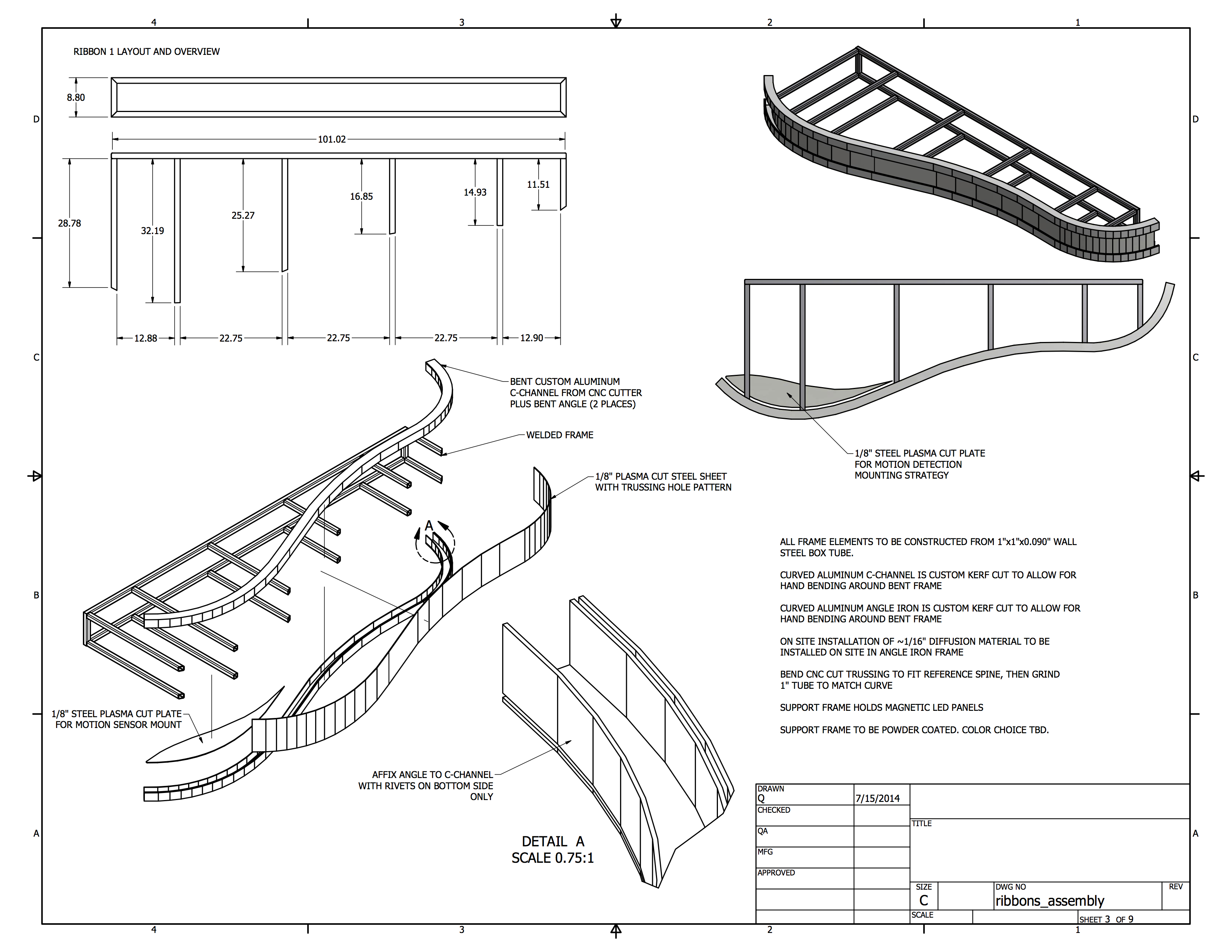


Developing content for the touchscreen
In developing our ideas around what would go on the touchscreen, we decided that an obvious place to start might be a timeline about Jimmy’s life. He had no formal education beyond 5th grade, leaving school to support his family at a pie factory where he actually led a walkout at the age of 13. He then joined the Merchant Marines at 15, lying about his age in order to sign up. After World War II, he settled in San Francisco, working as a longshoreman and joined the International Longshoreman Workers’ Union (ILWU).
I spent a lot of time at the ILWU’s archives going through materials about James R. Herman. We wanted to include photos of Jimmy throughout his life, alongside milestones and events that had been important to him personally, as well as politically.
It was humbling to learn more about both who Jimmy was as a person, and about San Francisco during a time when unions were dominant political powers and longshoremen worked the docks along the Embarcadero. It seemed to evoke a different era when the city was known more for progressive politics than the tech industry.
I spent a lot of time at the ILWU’s archives going through materials about James R. Herman. We wanted to include photos of Jimmy throughout his life, alongside milestones and events that had been important to him personally, as well as politically.
It was humbling to learn more about both who Jimmy was as a person, and about San Francisco during a time when unions were dominant political powers and longshoremen worked the docks along the Embarcadero. It seemed to evoke a different era when the city was known more for progressive politics than the tech industry.
Jimmy Herman around the time he moved to San Francisco



Archival photos of the San Francisco Embarcadero around the time Jimmy came to SF when it was an active port
In addition to the timeline, we also wanted to create a way for the touchscreen to connect with the larger interactive light installation. James R. Herman, despite his lack of formal schooling, was a prolific reader and wrote many inspiring speeches and articles over the years. We created a mode on the touchscreen called “What Do You Stand For?” which highlighted six areas of Jimmy’s activism. Along with librarians at the ILWU archives, and members of the James R. Herman Memorial Committee, we selected inspirational quotes from Jimmy that would appear on the larger light sculpture if a viewer selected them from the touchscreen.



The interactive mode of the touchscreen that allows viewers to select quotes to appear on the larger sculpture
Making particles into waves and text with custom software
We selected the following quotes to be displayed on the LED sculpture, formatting each quote to occupy the correct wave and its dimensions. The custom software of particles was programmed so that particles were attracted to white pixels, so we used png files of the quotes as masks for the particles to fall into place on and around.
Quotes by James R. Herman displayed on the larger LED sculpture. We laid the quotes out as png masks.






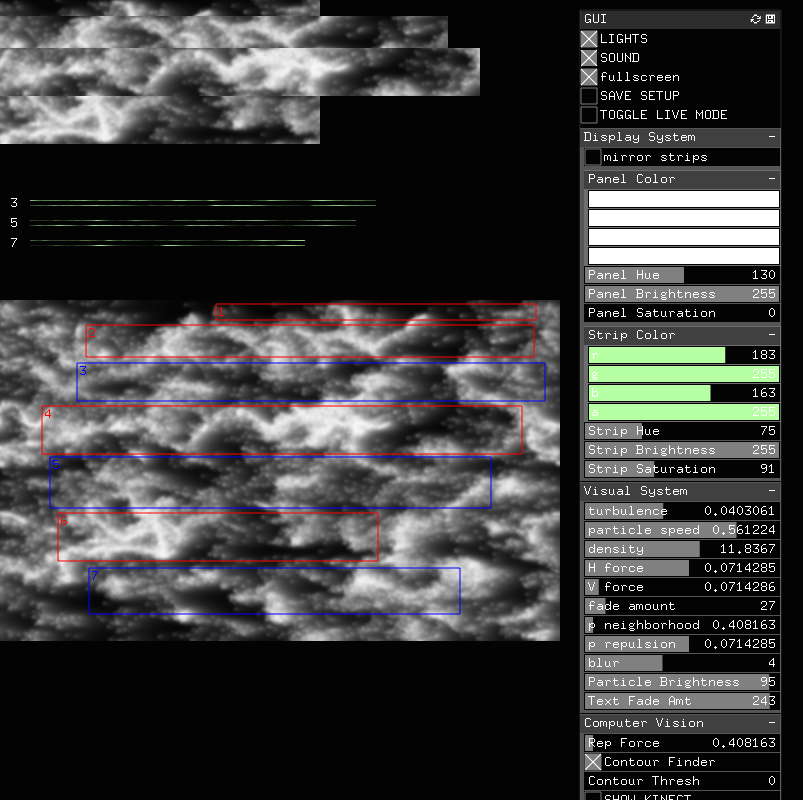

Screenshot of our custom software debug view that allowed us to tweak parameters and watch the visuals that were being sent to the LED panels. The four waves with LED panels were spaced out to take into account the waves without LEDs
An image showing a user interacting with the touchscreen to display the quote on the larger sculpture

Fabricating and installing the sculpture
After developing the material design, software and content for the installation, we worked intensely to finish the piece and install it before the cruise terminal opened to the public in September of 2014. Sean and the whole Sheet Metal Alchemist crew were integral in helping us meet our fabrication and installation deadline.
One of our main challenges was getting the LEDs we’d ordered working with our software and other tech. They only needed an HDMI input as signal, so we essentially used them as a very large low res monitor. They had their own programmed logic about what order each panel had in the larger configuration, so one of the first tests we ran was to try and make a rainbow gradient go across all the panels.
One of our main challenges was getting the LEDs we’d ordered working with our software and other tech. They only needed an HDMI input as signal, so we essentially used them as a very large low res monitor. They had their own programmed logic about what order each panel had in the larger configuration, so one of the first tests we ran was to try and make a rainbow gradient go across all the panels.
Testing our LED panels, first to determine the proper order of the panels, then to see how video content streams across them once they were attached to the metal frame
After staging the sculpture in a warehouse to ensure all the tech was properly configured, we transported each wave to the Pier 27 Cruise Terminal for installation. We had a tight schedule so that we’d be finished before the first cruise ship was set to dock in port, and worked long days on site to get everything installed.
We used a small forklift and a lift to install each wave and connect all the cabling. The first time we turned it on and everything seemed to be working happened at magic hour and felt like magic
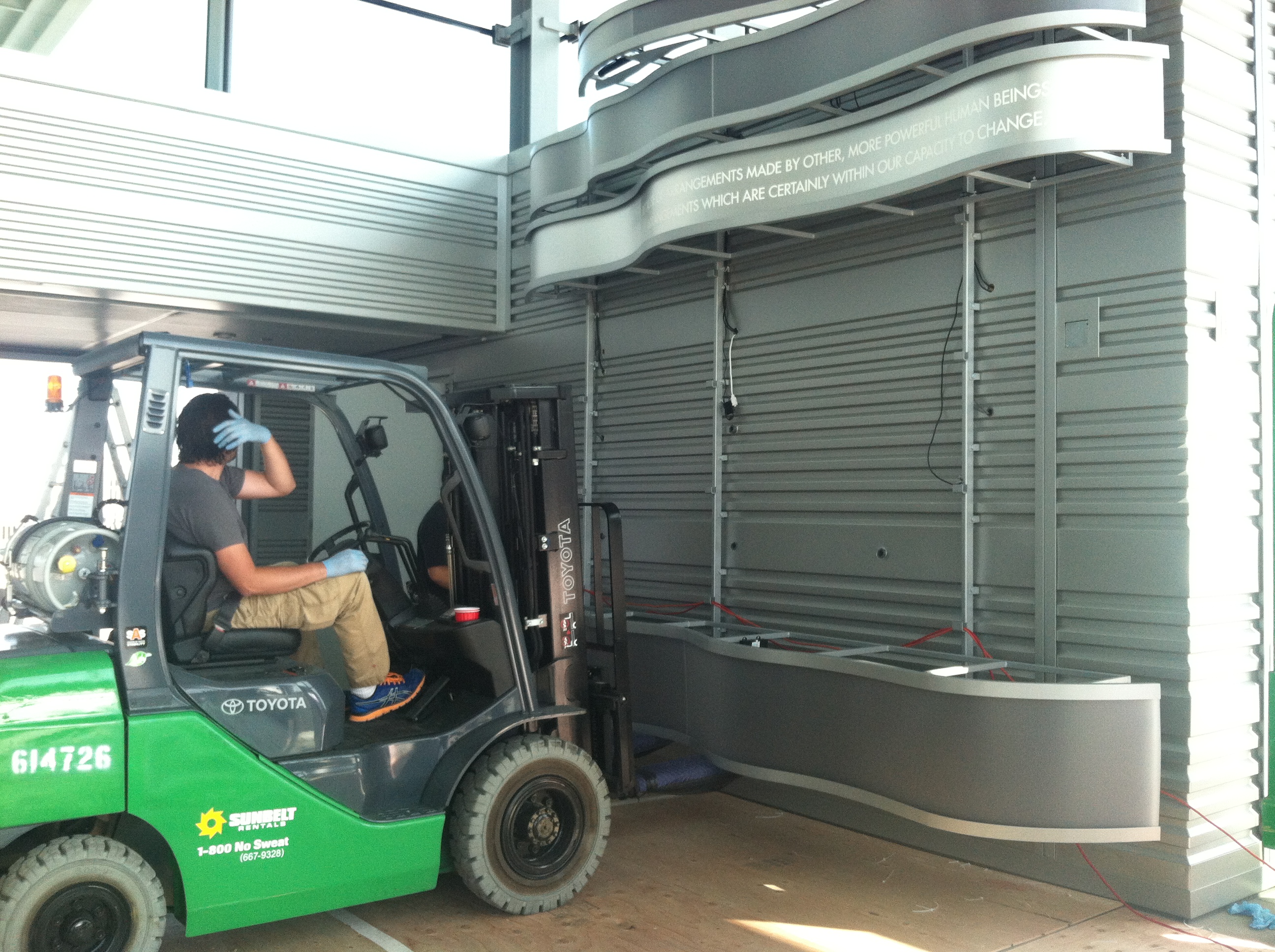
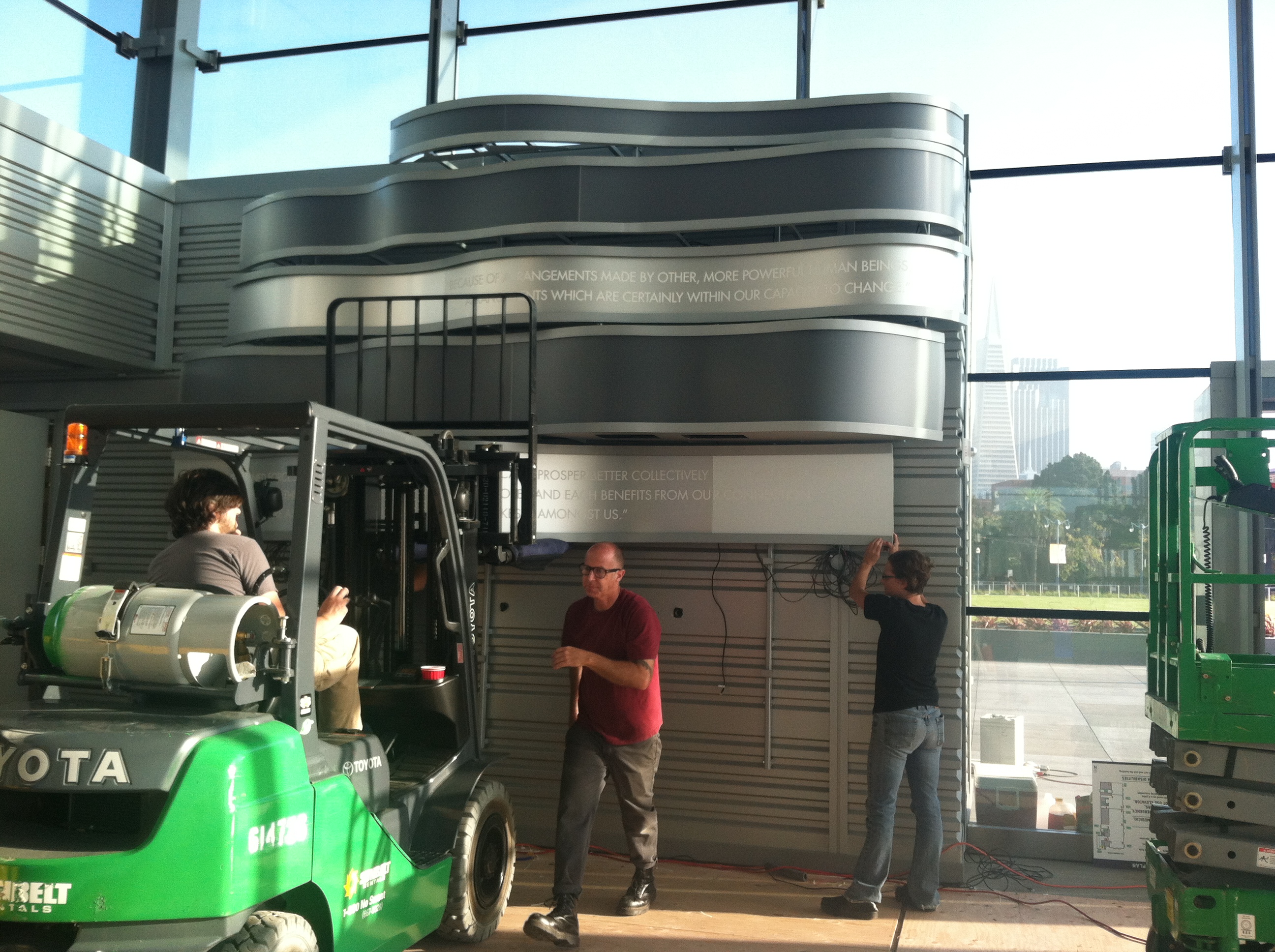
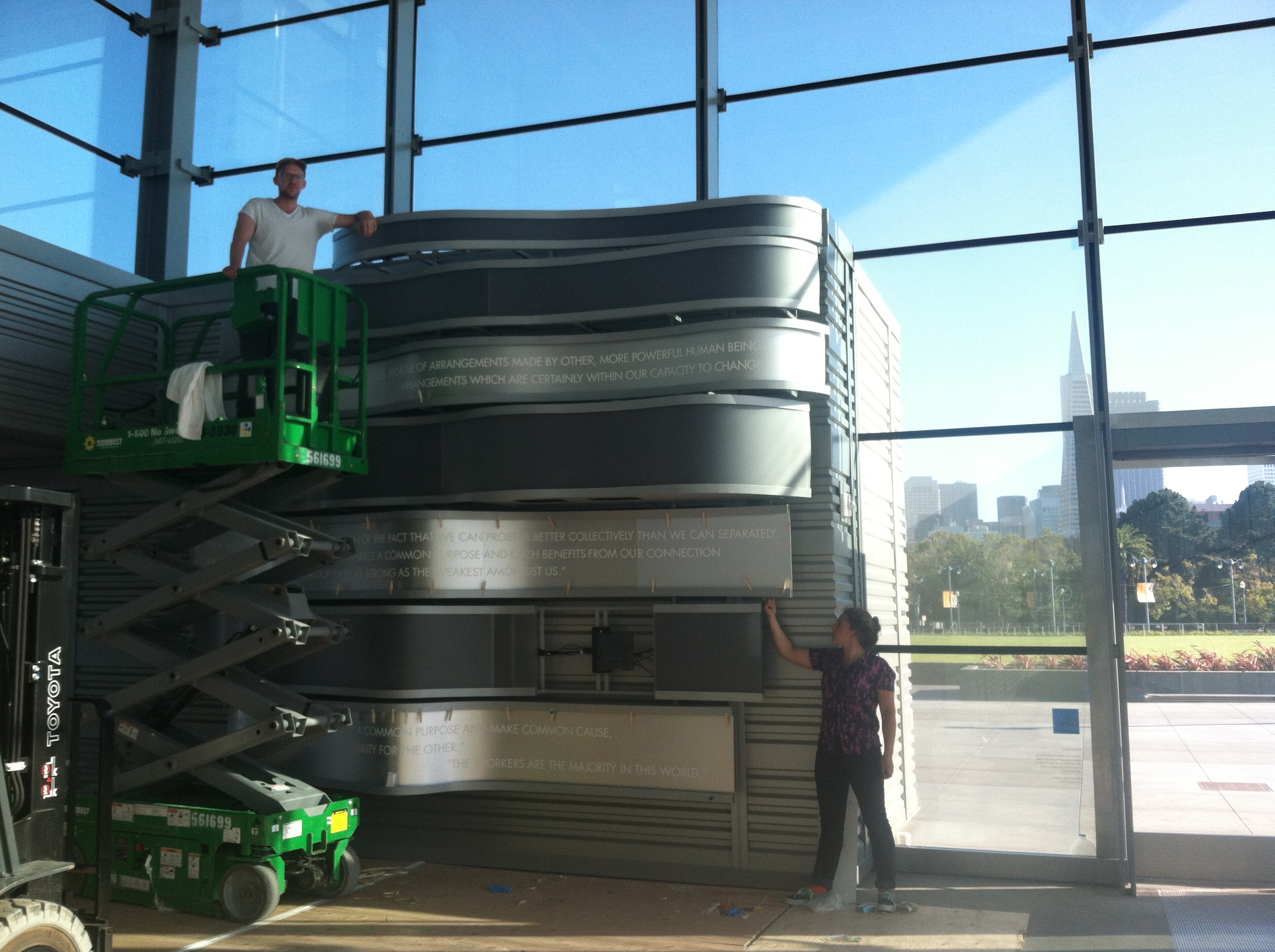
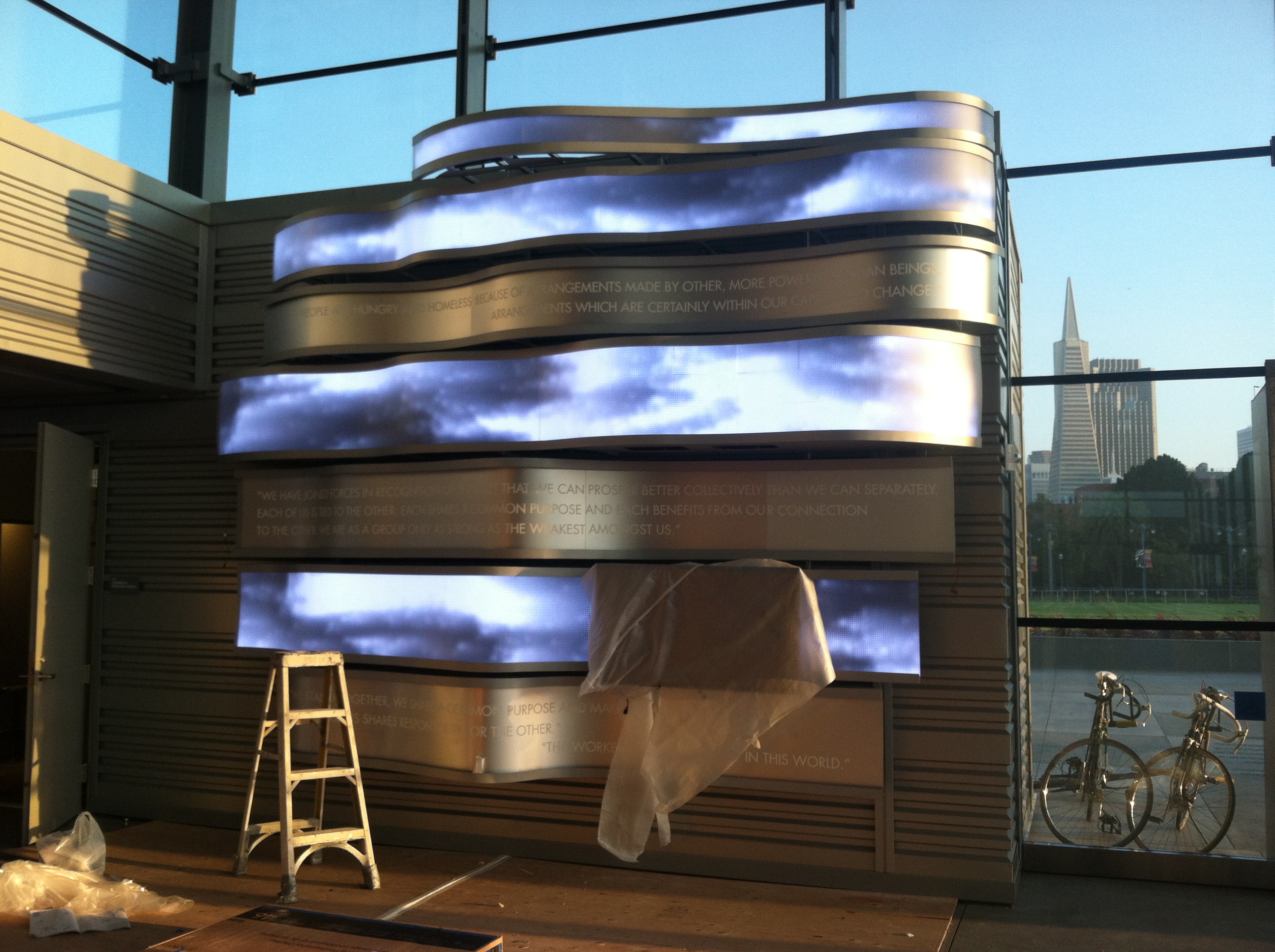
Opening reception
The James R. Herman Memorial Cruise Terminal at Pier 27 opened to the public in September of 2014. In March of 2015, the Tides of Change, the James R. Herman Memorial was officially unveiled to the public. Many friends, activists, politicians and supporters came to commemorate the occasion. Art Agnos, a longtime friend of Jimmy’s and the former mayor of San Francisco gave opening remarks.
Video documentation of the opening ceremony unveiling the memorial to the public